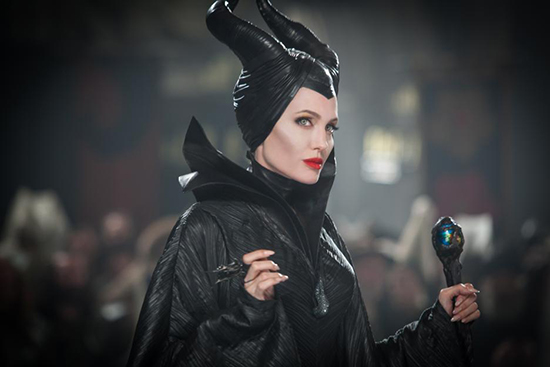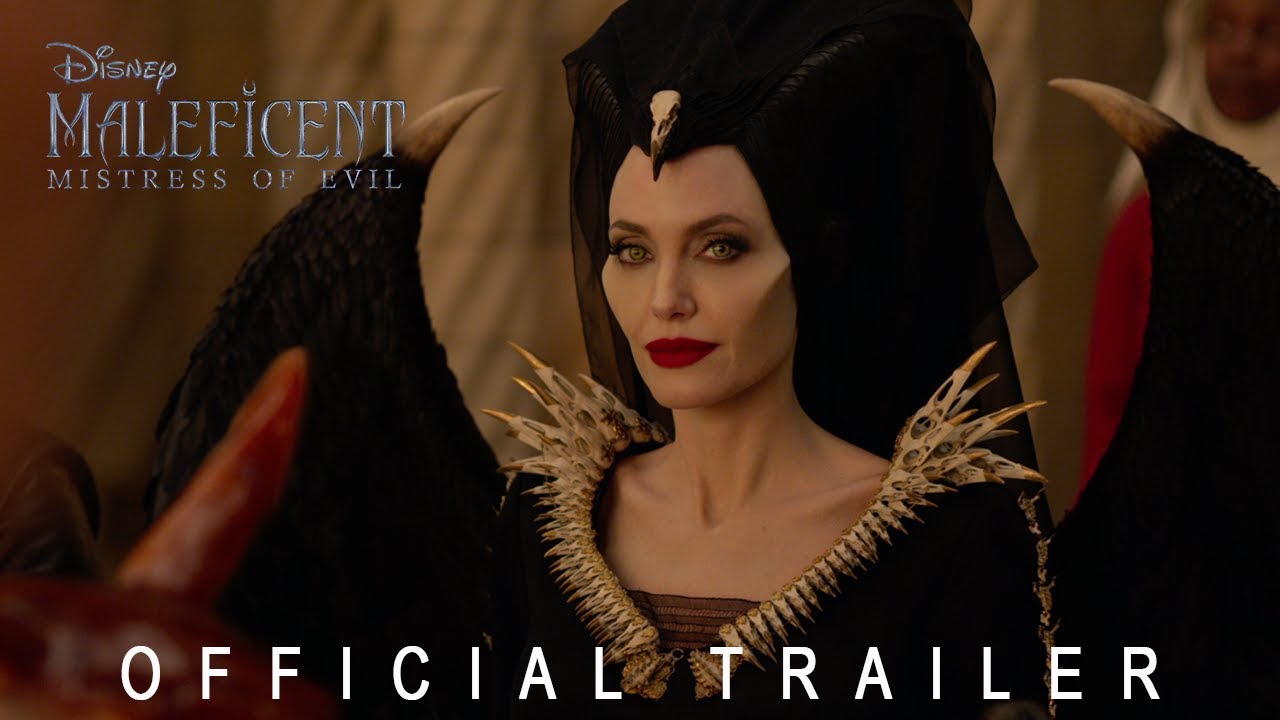Saying that Maleficent (2014) is a subpar movie is just preaching to the choir. At the time of writing, the movie remains Rotten on Rotten Tomatoes at 53%. However, this is not a review of the movie. Instead, it’s important to understand why Maleficent is exemplary of Disney’s disingenuous approach to modernizing its films for a more progressive audience. Disney sold Maleficent to audiences as a fully grown dragon that would flesh out the original canon, but instead what we got was a toothless lizard. The sequel, Maleficent: Mistress of Evil, may look promising to viewers eager to watch Angelina Jolie and Michelle Pfeiffer duke it out, but much like the eponymous character, I am here to crash a party I wasn’t invited to.
The biggest issue with the movie and the exact reason why it’s a failed feminist retelling is its handling of the reimagined female characters of the original 1959 Sleeping Beauty. While Angelina Jolie does embrace her character, giving the only compelling performance of the film, the attempt at reworking Maleficent as a misunderstood woman comes at the expense of the characterization of other female characters in the film. Flora, Fauna and Merryweather, the trio of good fairies familiar to many from the original Sleeping Beauty, are not present in the film as audiences would remember them. Instead, their counterparts in Maleficent are Flittle, Knotgrass and Thistlewit—whose names alone give tell to just how little thought the screenwriters put into these characters.
While the original 1959 movie is not necessarily a film many would consider feminist in its theme, there had always been a strong female presence throughout the original’s narrative. Flora, Fauna and Merryweather are arguably the most active characters of the movie, much of the story reliant on their decisions and influence. Merryweather is the one to counter Maleficent’s curse, the trio are the ones who come up with the plan to raise Princess Aurora in secret as Briar Rose, and they are the ones who rescue Prince Philip from Maleficent and actively navigate him through her obstacles to triumph over evil.
Mind you, these women are seen as good because they are written to be asexual, matronly figures who work within the confines of society’s rules. Flora and Fauna gift Aurora with traditionally feminine traits (beauty and song), and their active participation is to preserve the sanctioned rules of the patriarchal kingdom by protecting the princess until she is of marriageable age. They are short, round, and, though their reliance on magic does make them incompetent at conventional matronly roles (cooking, sewing and cleaning), they do occupy a safe female space especially when compared to the chaotic presence of Maleficent who seeks to disrupt the harmony of a traditionalist society.
When Maleficent had been announced, with plot details being revealed to offer an alternative take on Sleeping Beauty from the villain’s perspective, many were quick to compare it to Wicked. Wicked, a Broadway play based on the Gregory Maguire book of the same name, retells the story of The Wizard of Oz from the point of view of The Wicked Witch of the West, Elphaba. The driving force of Wicked in its retelling is the exploration of the relationship between Elphaba and Glinda, the Good Witch.
Both are complex women with unique character flaws and experiences, which shape them into the characters as they appear in The Wizard of Oz. However, unlike the original movie, neither character is simply good or simply evil in Wicked. Instead, the play shows that the “evilness” of the Wicked Witch is dictated by her decision to not work in tandem with the Wizard, who represents patriarchal, western ideals. Glinda, meanwhile, is “good” because she acquiesces to the Wizard’s established authority in Oz.
While I am not suggesting that Maleficent should have instead focused on the relationship between the Good Fairies and Maleficent, the Evil Fairy, the reason why Wicked is relevant is because it highlights the failings of Maleficent as a supposedly feminist narrative. Instead of complicating the role of the “Good” Fairies in a story from the “Evil” Fairy’s point of view, the screenwriters instead simplify them for the sake of a more digestible plot. Flittle, Knotgrass and Thistlewit are portrayed as bumbling, nonessential characters who are simply there to annoy the audience with their incompetence, and elevate Maleficent by comparison. They are shown to be uncaring and negligent of the young Princess Aurora, one example being their ignoring the baby so that she nearly tumbles to her death off a cliff – all to legitimize Maleficent as a reluctant caretaker for Aurora.
In an episode of YouTube series Renegade Cut, titled “Late Stage Disney”, Leon Thomas categorizes this most recent era of Disney movies as the aforementioned “Late Stage Disney”. This categorization is in accordance to the past categorization of Disney eras (ie: the “Disney Renaissance” of the 1990s, the “Disney Dark Ages” of the 1970s/80s, etc). In this video essay, Thomas defines this current era of Disney movies as containing “disingenuous themes and a pale imitation of post-modernism that only jokingly mocks its own canon” deconstructing “not to criticize, but to defend itself from criticism of its own place in late state capitalism”. He continues to define this era as seeking to criticize itself with “false introspection meant to praise and not critique” because it is not in the interest of Disney to sincerely criticize hierarchical structures that support the capitalist space in which the company operates.
The Disney films of this era, especially Maleficent, portray a safe version of feminism, one that does not complicate the social structure from which the company benefits. Recontextualizing Flora, Fauna and Merryweather as simpletons who do not care about or for Aurora is an example of just how modern Disney movies occupy a space that does not actually disrupt the status quo. Where Wicked calls to question what makes someone good and what makes someone “wicked”, Maleficent instead reformats the original story to make obvious who is good-yet-misunderstood, who is evil, and who is simply… an idiot.
Another egregious example of this false progressivism is the movie’s avoidance in making Maleficent monstrous. A defining moment for the original character was her transformation into a dragon during Sleeping Beauty’s climax. It is an image so iconic that for decades following the movie, Maleficent’s dragon form has been sold to Disney fans by way of shirts, plushies, pins, mugs. However, in much the same way the film displaces Maleficent’s monstrosity in only giving the character otherworldly cheekbones (despite initially being hesitant to alter Jolie’s appearance), the film also displaces Maleficent’s dragon form onto her raven familiar. The movie does everything to uncomplicate the character of Maleficent. Another example is the chaos Maleficent represented in the original 1959 Sleeping Beauty that upturns established society is now stymied as a poorly conceived rape allegory, in which Maleficent is drugged and her wings removed by a former lover. The film, however, is too afraid to look further into this allegory, keeping it instead as a simplified reason behind Maleficent going against the kingdom.
The experience of watching Maleficent in 2014 was tiring when I was expecting more. And with the continued safety of all live-action remakes Disney has released since then, I’ve grown exceptionally tired of Disney capitalizing on the bare-bone basics of progressive ideologies, meant to sell, and only to sell. I can’t even say these movies are all style with no substance, because they’re neither. There’s a version of Maleficent in my head that rights all the wrongs of the film we wound up with. Perhaps parts of this preferred version will show itself in Maleficent: Mistress of Evil, but I’m not going to hold my breath.
Maleficent: Mistress of Evil is in cinemas from 18 October



